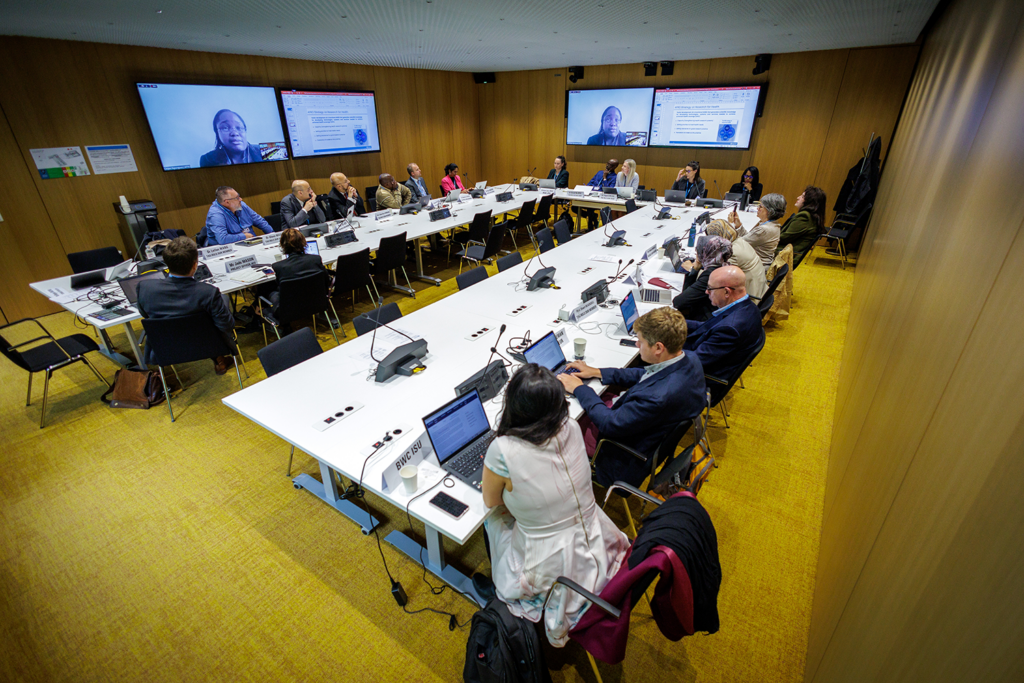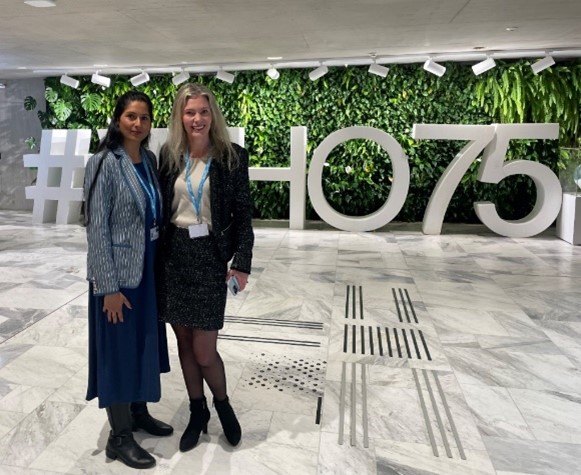Building Trust Through Transparency in Biorisk Management
Note: The reflections in this blog are of Dr. Syra Madad and Dr. Filippa Lentzos and do not represent the viewpoints of TAG-RULS DUR, the World Health Organization or The New York Academy of Sciences.
Published May 13, 2024
By Syra Madad, D.H.Sc., M.Sc., MCP, CHEP, and Filippa Lentzos
Academy Public Health Contributors

In September 2022, the World Health Organization (WHO) marked a significant milestone in global health security by issuing the Global Guidance Framework for the Responsible Use of the Life Sciences, aimed at setting a global standard for mitigating biorisks and governing dual-use research. More recently, the WHO set up a Technical Advisory Group on the Responsible Use of the Life Sciences and Dual-Use Research (TAG-RULS DUR) to support implementation of the Guidance Framework, and as members of that group we had the privilege of participating in its first in-person meeting at the WHO headquarters in Geneva, Switzerland. This historic gathering underscored the critical need for communication, collaboration, and coordination.
Prior to the meeting, we reflected on a crucial lesson gleaned from the COVID-19 pandemic: the imperative to rebuild trust in science. Drawing from our expertise in biosecurity and biorisk management, we discussed the foundational principle for fostering global trust in science: transparency in biosecurity risk management.
Transparency in Biorisk Management
Transparency in biorisk management involves several layers, from disclosing research methodologies to sharing findings and potential risks associated with biological advances. This transparency is crucial not only for advancing scientific knowledge but also for maintaining public trust, understanding and engagement. To effectively unpack the concept of transparency in biorisk management, let’s consider its practical application across different dimensions. These layers of transparency are not just theoretical; they are implemented through specific practices that are essential for maintaining the integrity and trustworthiness of scientific research. Here are three critical aspects where transparency plays a pivotal role:
1. Disclosing Research and Outcomes
It is essential that scientific endeavors, especially where dual-use potential is high, are conducted as openly as possible, and that the intent, potential benefits and potential harms of the research are clearly communicated. This openness helps the scientific community and publics to better understand risk-benefit assessment associated with the research, as well as fosters an informed dialogue about what constitutes responsible science in this context and what safeguards might be necessary.
2. Engagement with Public and Stakeholders:
Effective risk communication is a vital aspect of transparency. It involves clear, consistent, and accessible information being provided to the public. In addition to scientists, our discussions highlighted the role of various stakeholders, including funders, publishers and host institutions, in disseminating balanced and factual information to demystify scientific processes and debunk myths and misinformation.
3. Collaborative Governance
The governance of dual-use research requires cooperation across national and international frameworks. By sharing best practices, challenges, and successes in a transparent manner, countries and institutions can better prepare and respond to biosecurity risks. Collaborative governance also includes public engagement in policy-making, ensuring that the voices of affected, or potentially affected, communities are heard and considered.
In our continuous journey towards safer and more secure scientific practice, the role of transparency cannot be overstated. It is not merely a procedural element but a foundational principle that supports the entire framework of responsible life sciences research.
By adhering to transparent practices, we not only safeguard against misuse but also build a more resilient trust in science that is crucial for societal advancement. Transparency, engaged governance, and robust stakeholder communication are not optional but essential to our collective efforts in ensuring the safe use of biotechnologies. The path forward is clear; it is one of openness, engagement, and unwavering commitment to global health security.
The Role of TAG-RULS DUR
The WHO’s Technical Advisory Group on the Responsible Use of the Life Sciences and Dual-Use Research (TAG-RULS DUR) plays a pivotal role in advising WHO and its Member States on the responsible use of life sciences, focusing on mitigating biorisks and governing dual-use research. Our mission aligns with the One Health approach, which optimizes the health of people, animals, and ecosystems, and recognizes the interdependence of health and biological sciences. The group’s formation reflects a collective commitment to address safety and security concerns posed by novel and existing technologies, which, while promising, can also harbor potential risks for accidental or deliberate harm. Learn more about TAG-RULS DUR.

About the Co-Author
Filippa Lentzos is the Reader (Associate Professor) in Science & International Security at King’s College London. She holds a joint appointment in the Department of War Studies and the Department of Global Health & Social Medicine.
Stay connected with Dr. Madad:
Instagram
Twitter/X
LinkedIn
Facebook
